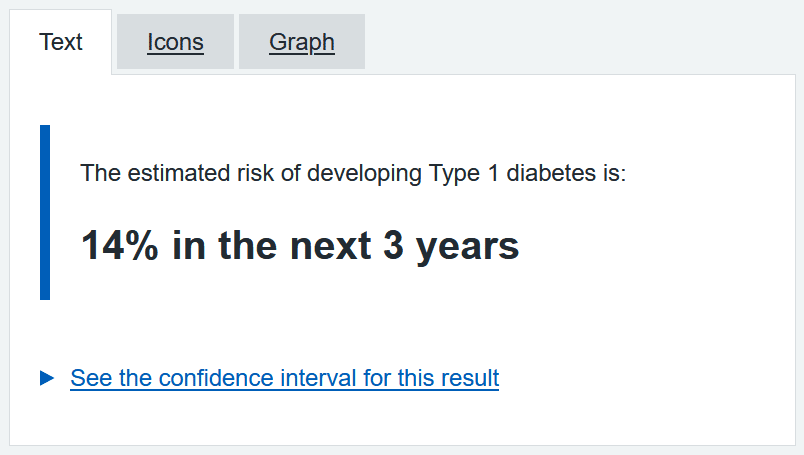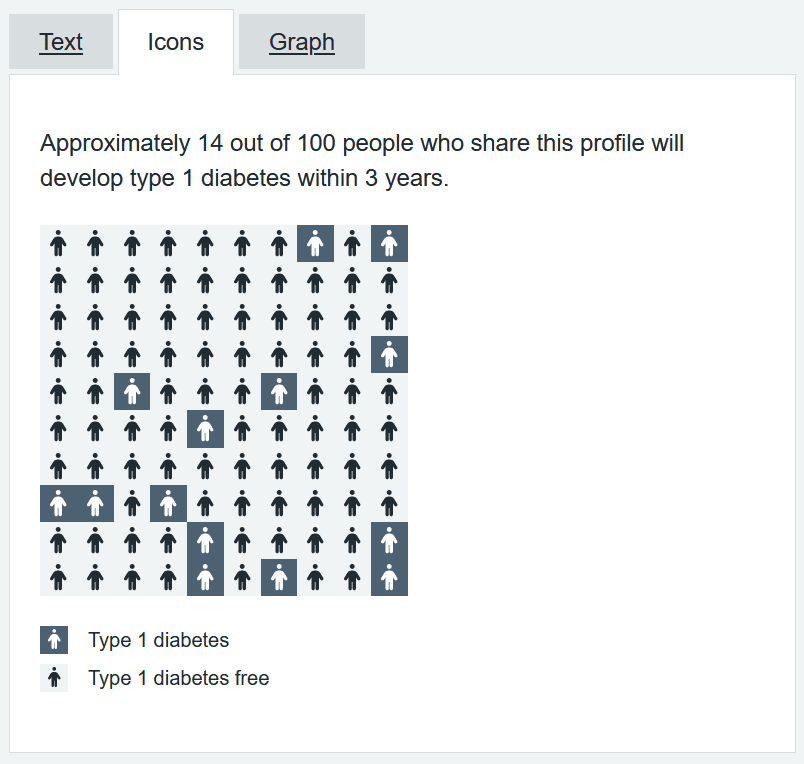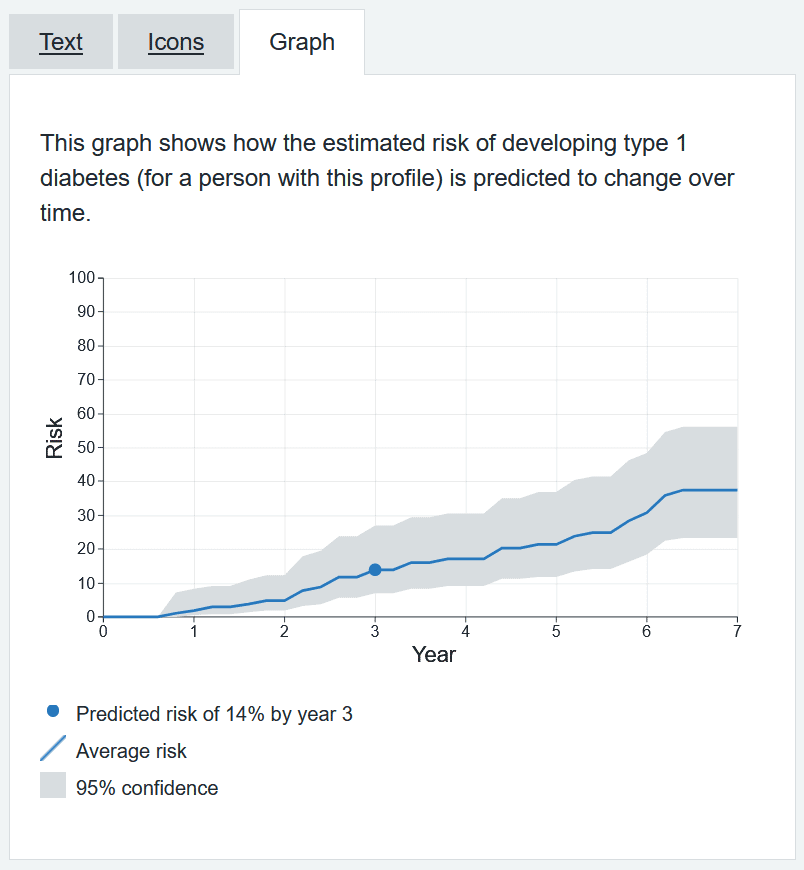Exeter Biomedical Research - Type 1 Diabetes calculator
🩺 interface designsoftware developmentserver architectureWe worked with the Exeter Biomedical Research Centre / University of Exeter on taking their research prototypes and turning them into fully fledged medical tools.
They had developed a computer model which could predict Type 1 diabetes risk in children, and they wanted to make this available to medical professionals.
It’s all about the process
Designing medical systems requires a highly disciplined process, one that can be fully audited all the way from idea to deliverable. This is not a ‘move fast and break things’ environment - we developed a framework to ensure we would be fully compliant on the path to certification by the Medicines and Healthcare products Regulatory Agency (MHRA).
Working remotely
We worked closely with the team at Exeter, and remote working meant we could fit in with busy doctor schedules. We used a combination of video conferencing, screen sharing and collaborative tools to ensure we were always on the same page.

Designing for the user
Designing a slick low-friction user experience is hard, especially when working in a medical setting where wording has to be precise and non-confusable. Whilst we used NHS design systems for our app design, that only got us so far. It’s really difficult to convey risk, percentages, confidence intervals and other numerical information without the potential for misinterpretation. We prototyped various ways of communicating risk to the end user and ended up with a three-pronged approach: textual, iconic and graphical.



As well as being easy to interpret, the calculator also needed to be highly available and secure. We designed a server architecture that would scale to meet demand and be resilient to failure. We also designed a security and validation system that ensures the underlying data model is providing accurate data to the end user.
Our outputs from this project continue on to other research areas with the medical team at Exeter, allowing us to quickly bootstrap similar tools across other areas of research, ready for their inclusion in published journals.